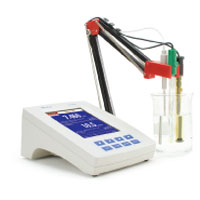
Among all of the elements of the periodic table, fluorine is the most electronegative element. As a highly reactive nonmetal element, fluorine combines with virtually all elements, excepting oxygen and the noble gases, to form fluorides. Fluorides are inorganic anions of fluorine that occur naturally in soils, water, plants, and animals. Primarily through food consumption and fluoridated drinking water, humans intake minor amounts of fluoride on a daily basis. While minimal fluoride exposure from natural sources is desirable for bone strengthening and reduced tooth decay, higher amounts of fluoride can negatively impact one’s health.
There exist many professions in which employees are regularly exposed to elevated amounts of fluoride. A significant form of fluoride that is common in industrial and chemical industries is hydrogen fluoride. Hydrogen fluoride is used for glass etching, stainless steel pickling, and aluminum production. Occupational exposure to hydrogen fluoride can occur by breathing in the vapors of gaseous form or by dermal contact with the liquid form.
The effects of chronic fluoride exposure include ocular irritation, pulmonary edema, and skeletal fluorosis; for these reasons medical surveillance of workers is generally required in these industries. When workers are exposed to hydrogen fluoride, pre- and post-shift urinalyses are performed to determine the level of fluoride exposure. The National Institute for Occupational Safety and Health of the United States (NIOSH) recommends fluoride levels of no more than 4 mg/g in pre-shift urine and 7 mg/g in post-shift urine. The fluoride concentration is reported as urinary creatinine.
A private medical lab began receiving urine samples from an aluminum smelting factory that required pre- and post-shift urinalyses. The medical lab contacted Hanna Instruments in search of a fluoride ion selective electrode (ISE) and complementary benchtop meter in which they could perform their analyses. The lab was required to follow the NIOSH Method 8308 for determination of fluoride in urine which utilizes an ISE.
Hanna recommended the HI5222 Laboratory Research Grade Two Channel Benchtop pH/mV/ISE Meter along with the Fluoride Half-Cell Ion Selective Electrode (ISE) - HI4010 and Reference Electrode for ISE Half-Cells - HI5315. The customer was satisfied with the ease of use in taking direct fluoride measurements.
After performing a calibration of the fluoride ISE, the lab simply needed to prepare a sample of urine and add an equal amount of total ionic strength adjustment buffer, or TISAB. TISAB is required for samples to ensure fluoride ions can detach from complexes with other ions that may be in the sample, including aluminum or iron (III); TISAB also adjusts the pH of the sample to be within the optimal measuring range of pH 5 to 7. By adding the HI4010-00 TISAB II to their samples, the lab felt confident in their measurement of total fluoride concentration.

Even more so, the lab valued the fact that they were able to perform quality control with the use of an analyte addition method. In this type of measurement, a fixed volume of the sample with the unknown fluoride concentration, otherwise known as the analyte, is added to a fixed volume of a known standard.
The HI4222 meter has a preprogrammed method and calculations for analyte addition determinations; the lab simply needed to follow the prompts given by the HI4222 to complete their analyte addition method. Once the method was complete, the lab was able to get a displayed reading of the fluoride concentration in the original sample, without the need of performing manual calculations. Overall, the lab valued the accuracy and ease at which they were able to provide results for their customer with the use of Hanna’s benchtop meter and fluoride ISE.
As a leader in innovation Hanna Instruments developed the HALO Wireless pH Meter, which uses Bluetooth Smart Technology to connect to Apple and Android devices running the Hanna Lab App.
Continuing with this tradition, the Hanna Instruments Blog is devoted to sharing the latest in product overviews, how-to guides, and industry specific news to our ever-growing audience.
Contact us at sales@hannainst.com.